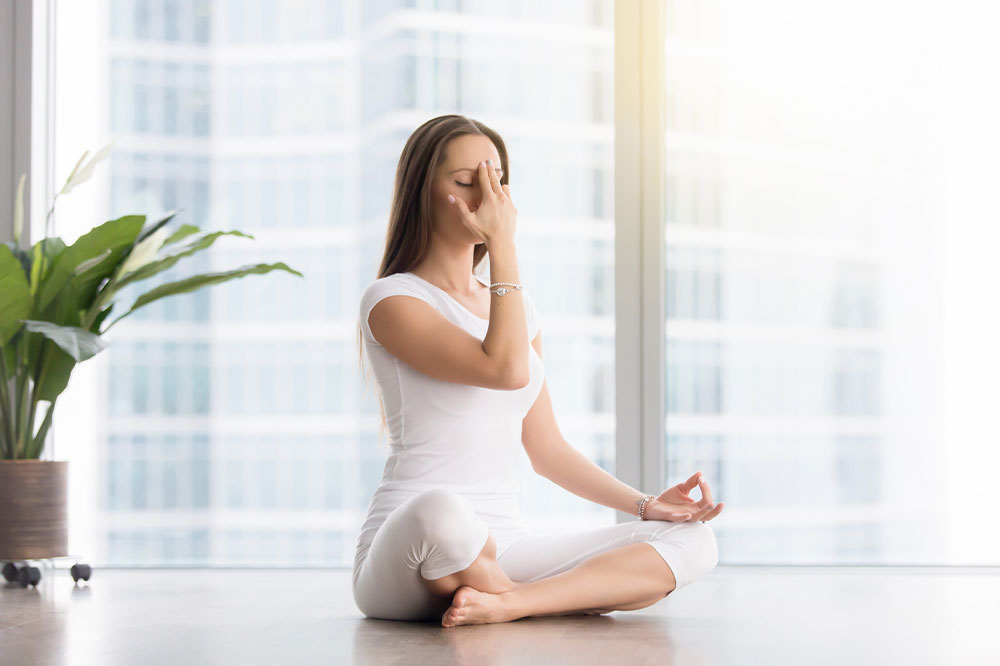7 Practical Remedies for Sleep Apnea Patients

People diagnosed with sleep apnea experience several stops and restarts in their breathing while they nap. As a result, their body does not get enough oxygen while asleep. Such people may show specific symptoms, including snoring or gasping while sleeping, inadequate sleep, and excessive fatigue during the daytime. Sleep apnea is a health condition affecting nearly 18 million people in the country, but it can be kept at bay with the help of many remedies.
Changing sleeping position
Making slight modifications to the sleeping position enables a person to reduce sleep apnea symptoms subtly. It can help such people sleep soundly at night and prevent morning fatigue. Several research studies indicate that one’s sleeping position influences most obstructive sleep apnea. Healthcare experts generally suggest people avoid sleeping on their back (known as the supine sleeping position), which often worsens sleep apnea in individuals living with it. Meanwhile, certain studies point out that the supine position is better for reducing sleep apnea symptoms for kids while they sleep. Essentially, patients need to discuss body positioning during sleeping with a healthcare expert to get the best advice.
Using a CPAP machine
Many sleep apnea patients have found a Continuous Positive Airway Pressure (CPAP) machine helpful in fighting the symptoms. A CPAP machine delivers air pressure to patients through a mask when they sleep. This machine keeps a person’s upper airway passages open by maintaining higher air pressure in the mask than in the surrounding air. In addition, it drastically prevents snoring, gasping, and other sleep apnea symptoms. At first, using a CPAP machine can be challenging for many due to its relatively cumbersome nature. However, most people learn to live with the tension of the mask straps or find a secure and comfortable fit for wearing to sleep every night. To find the best CPAP machine to relax nap-time breathing or the way to use it most comfortably, one can consult their healthcare expert.
Practicing yoga
Yoga can improve an individual’s oxygen flow and strengthen their respiratory system. This is a critical factor in gradually and progressively reducing the severity of sleep apnea in people. The condition is directly linked to a drastic reduction of oxygen saturation in a person’s blood. Practicing yoga addresses this issue and reduces the number of sleep interruptions one faces during the night.
Opting for surgical treatment
There are multiple treatment options to ease sleep apnea symptoms in patients. Some of the most popular surgery options include a maxillary or jaw advancement surgery, which involves healthcare professionals surgically moving a sleep apnea patient’s upper and lower jaws forward to tangibly increase the size of their airway. It automatically improves their breathing while they sleep. Another surgical option is adenotonsillectomy, which involves doctors removing a person’s adenoids (mass of tissue located at the back of the nasal cavity) and tonsils to open up their airways and, eventually, reduce the severity of their sleep apnea. Another option involves the placement of an implant to actively monitor a sleep apnea patient’s breathing patterns whenever they nap. This data is then used to help control their airways while the patients sleep. The fourth surgical option is an operation to remove some soft tissue from a sleep apnea patient’s throat and mouth. Like the other options, this helps enlarge their upper airway to improve their nap-time breathing. Usually, surgeries are considered to be a last-stop solution if most other treatment alternatives fail to work out. However, surgeries have a higher success rate than other remedies.
Using a humidifier
Many people with sleep apnea have the condition due to exposure to dry air, which closes their air passages, increases congestion, and aggravates sleep apnea symptoms. Humidifiers are the perfect solution to this problem as they artificially add moisture to the air. When patients use this device, they can counter all the issues specified here caused by excessively dry air inhalation. Certain essential oils have anti-inflammatory properties, such as peppermint, lavender, or eucalyptus oil, so users can consider adding them to their standard humidifier. Also, one must consult their healthcare expert to know how to use humidifiers correctly and clean them to prevent molds and bacteria from entering.
Exercising regularly
Eating healthy is a big part of sleep apnea care. People must consume foods rich in nutrients to keep themselves healthy. However, an even more important aspect is daily exercise. Regular, healthy workout sessions are a must for sleep apnea patients. Exercise has benefits other than just keeping one’s body in shape. Regular exercise helps reduce a person’s BMI and burn calories. Additionally, working out properly also helps people with creating new muscle mass. Workout sessions in the daily routine help improve a person’s breathing by making them healthy. Research studies have found that people who exercise daily are less likely to have sleep apnea or other respiratory or sleep-related disorders. As a result, regular exercises are arguably the most powerful of all the natural sleep apnea remedies.
Antioxidants
Eating foods rich in antioxidants is another natural and convenient way to reduce sleep apnea symptoms. Foods high in antioxidants are often vitamin-rich foods. Such foods resolve patients’ breathing issues while they sleep and reduce inflammation, one of the significant causes of sleep apnea. Additionally, antioxidant-rich foods like broccoli, avocados, beetroot, radish, lettuce, sweet potatoes, kale, spinach, carrots, potatoes, artichokes, asparagus, and several other foods, also improve the health condition of blood vessels in patients’ throats. As a result, eating such foods also improves their breathing while they sleep. In addition, foods rich in antioxidants are often also rich in elements such as selenium, omega-3 fatty acids, vitamin E, and others. Sleep apnea is primarily a sleep disorder, and antioxidants are one of the most effective agents for addressing such conditions in nearly all patients.






